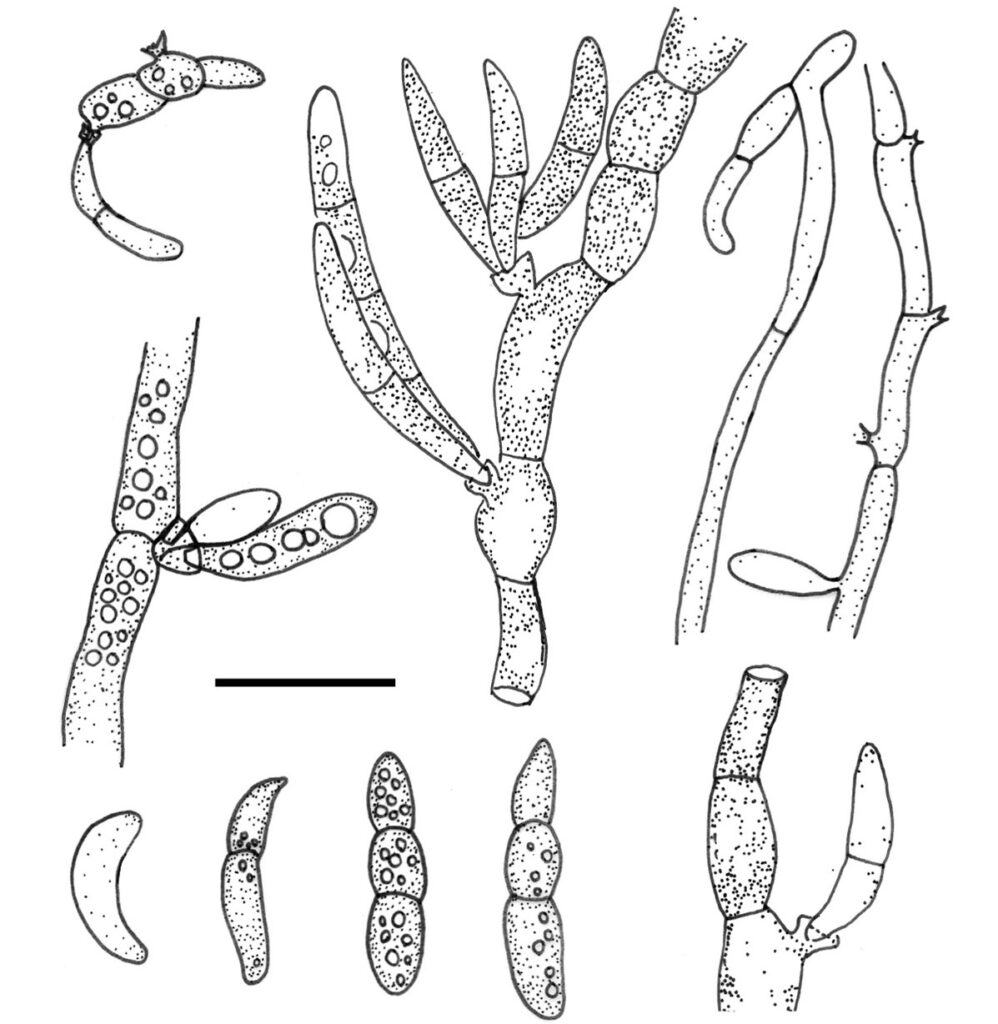Cyphellophora laciniata G.A. de Vries, Mycopath. Mycol. appl. 16(1): 47 (1962), Figure 20
MycoBank number: MB 329520; Index Fungorum number: IF 329520; Facesoffungi number: FoF 10360;
Pathogenic on skin scales of a human patient. Colonies woolly-velvety, grey, margin entire, reverse olivaceous black to black. Vegetative hyphae 2–3 μm wide, hyaline initially, pale brown in older hyphae, septate, constrictions at the septa, straight or undulate, smooth-walled, with inflated cells, sometimes with dark brown excrescences in older hyphae, guttulate when young, the older hyphae with many oil droplets. Sexual morph: Undetermined. Asexual morph: Hyphomycetous. Conidiophores absent or rarely reduced to a short cell basal to the conidiogenous cells. Conidiogenous cells enteroblastic, phialidic, short cylindrical to flask-shaped, intercalary, lateral or terminal, sometimes arising at short side branches of hyphae, with a short flaring collarette, sub-hyaline to pale olivaceous brown, thin-walled. Conidia 11–25 × 2–5 μm, oblong-fusoid or oblong-ovoid, 1−3-trans-septate, constrictioned at the septa, hyaline to brown, straight or curved, smooth-walled, guttulate when young, with many oil droplets in the older hyphae, without a gelatinous sheath or appendages. Spermatial state is absent. Chlamydospores absent. (Description modified according to de Vries (1962, Feng et al. 2014)
Material examined: Switzerland, Basel, probably as a contaminant, from skin scales of a human patient, 1954, Wissel K.M. (Centraalbureau voor Schimmelcultures, holotype).

Figure 20 Cyphellophora laciniata (Centraalbureau voor Schimmelcultures, holotype, redrawn from de Vries 1962). Conidiogenous cells with conidia. Scale bar: 20 µm.
